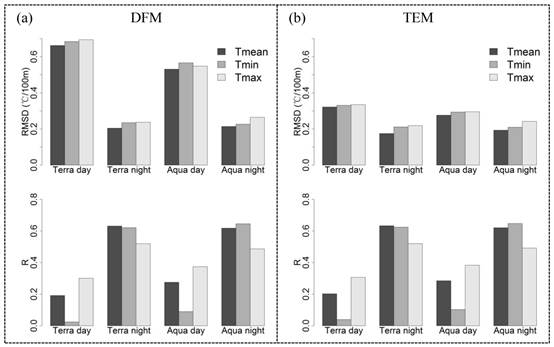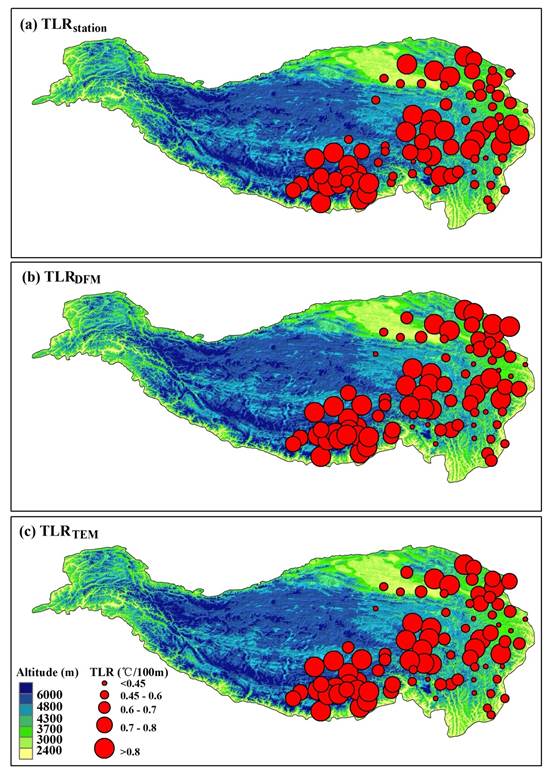Air Temperature Lapse Rate (TLR) is the most commonly used parameter for air temperature interpolation in mountainous areas. Since the TLR of the Tibetan Plateau (TP) is found to have strong spatiotemporal variation, it is hard to predict accurate and reliable TLRs only based on the sparse stations. Though there are a number of air temperature estimation studies based on MODIS Land Surface Temperature (LST), no studies have been conducted to quantitatively evaluate the feasibility and accuracy of TLR estimation from the MODIS LST data.
Dr. Hongbo Zhang, a member of Professor Fan Zhang’s team of the CAS center for excellence in Tibetan Plateau earth sciences and the Institute of Tibetan Plateau Research, and the co-authors compared and evaluated two kinds of methods based on MODIS LST data, using the air temperature observation from 86 meteorological stations over the TP. One is Directly computing the lapse rate From MODIS LST (DFM) and the other is calculating the lapse rate of estimated air temperatures based on air Temperature Estimation from MODIS LST (TEM).
The results show that both DFM and TEM show acceptable accuracies for estimating the TLR of daily mean air temperature using MODIS nighttime LSTs with mean RMSDs of ~0.2 ℃/100m (Figure 1). Considering the fact that the mean elevation of the TP is ~4300m and that of all CMA stations in the TP is ~3300m, to predict the air temperature at an elevation of ~ 4300 m using the TLR and the air temperature data from CMA stations at ~3300 m on average, the ~0.2 ℃/100m error of TLR is expected to generally produce ~0.2 ℃(=0.2℃/100m*1000m)error for air temperature interpolation in the TP. The spatial patterns of MODIS LST-estimated TLRs of Tmean from both DFM and TEM are also found to be highly consistent with the observed TLRs (Figure 2). With similar accuracy and spatiotemporal patterns, the DFM method has a better potential to be applied in the western TP with extremely sparse observations due to its advantage of needing no air temperature observations compared with the TEM method.
This paper has been published in Journal of Geophysical Research: Atmospheres, with paper link: https://agupubs.onlinelibrary.wiley.com/doi/10.1002/2017JD028243。

Figure 1. Accuracies of the DFM (a) and TEM (b) methods for TLR estimation for Tmean, Tmin and Tmax in comparison to TLRstation.

Figure 2. Spatial distributions of TLR Tmean values derived from DFM (b) and TEM (c) based on Terra nighttime LSTs, and those based on station (a).


